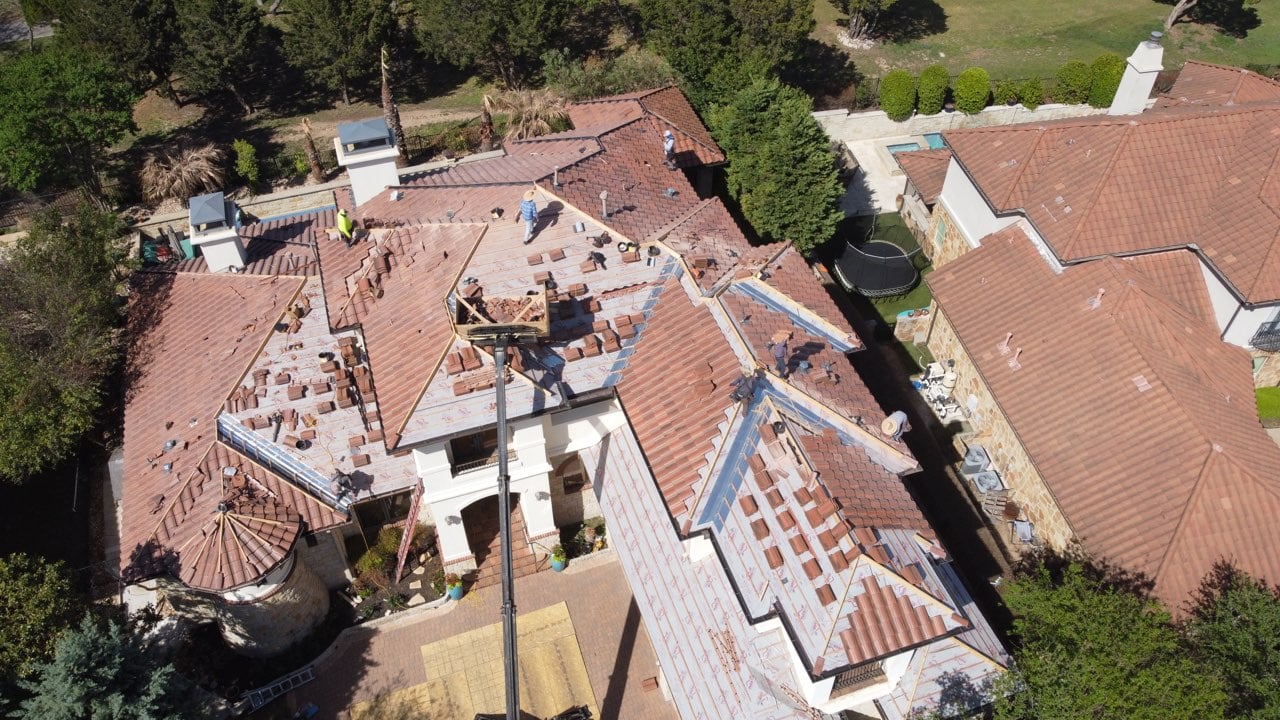

6 Points to Consider for a Clay Tile Roof Installation
There are many attractive qualities to a clay tile roof. With that in mind, there are several considerations to keep in mind when it comes to a clay tile roofing installation for your home.
Overall, when it's time to replace a roof, or there's enough storm damage that an emergency roof fix can't resolve, many homeowners choose clay tile roofing because of its classic appearance and incredible durability. While clay tiles are heavier than other roofing materials, they can last 50 years or more.
On the downside, roofing systems such as clay tile roofs represent a significant initial investment that can be destroyed if not installed and taken care of properly.
The process of installing roof tiles is lengthy and requires a lot of pre-installation setup, such as finding appropriate underlayment for the specific type of tile and measuring all of the materials. From there, once the actual installation starts, the roof tiles must then be installed in a specific pattern to make sure they stay in place and the roof will not leak.
Here are some key requirements for long-lasting clay tile roofs.

1. Upfront Cost
When compared to other types of roofing, keep in mind that clay tile roofing will be a bigger investment than some. However, when you consider a clay tile roof's lifespan (which is estimated at between 50 and 100 years), you'll find that the investment is worth it.
If you have questions about a clay tile roof's upfront cost, please don't hesitate to reach out to the team at LOA Construction! Find out about the different types of tile roof and the best way to install them here.
2. Weight
Another important consideration is the weight of clay tiles. Compared to a roofing system such as asphalt, your clay tile roof will be much heavier.
It will be important to have your roof structure inspected by a local roofing company in Austin to ensure that your home will be able to support the extra weight that comes with a clay tile roof.
Read More: 4 Tips For Choosing A Roof Type
3. Materials Used
Now, let's talk about the materials required for a clay tile roof installation.
Clay tiles tend to vary in their performance, and many roofs show damage not long after they were installed. A good rule is that the tiles should have a high success rate in the climate where they will be installed. For example, if you live in a colder climate, be sure to check if the clay tiles you are tested and perform well for your area. The materials and tiles should be tested for impact, wind, and heat resistance.
4. Underlayment
Clay tile roofs are designed to shed water when it is raining or snowing. Although, it is almost inevitable that some water run-off will find its way underneath the roofing material. Experienced roofing companies will assemble a layer of self-adhered waterproofing membrane, which sticks to the roof deck and prevents a leaking roof when water backs up behind ice dams and also seals around roof fasteners.
One important caveat to keep in mind for clay tile underlayment: self-adhered membranes can invite condensation in some buildings and climates.
5. Gutters and Flashing
During the roof installation process, the other components should have the same life span as the clay tile material. For clay roofs, it's important that the perimeter flashing and gutters are made with durable materials such as heavy-gauge copper or stainless steel.
6. Attachments
For clay tiles to adhere securely to the roof deck, use rust-resistant copper or stainless steel nails. This will help to prevent noise created when tiles rattle against each other when it's windy. For along the roof perimeters, look for nose clips that restrain the front edge of the tiles.
Read More: What is the Best Time of Year to Install a Roof?

The Benefits of Clay Tile
Wondering if you should repair or replace your roof? With all the considerations and pros and cons that come with clay roofing tiles, their beauty, long lifespan and an array of cost-saving benefits tend to outweigh these considerations. Make sure you work with a company that can meet all these considerations and more.
When investing in a clay tile roof, you'll want to ensure that you have chosen the right roofing company for the job. Ask friends, family, coworkers, and acquaintances about a solid roofing company in the area. Review Google, Yelp, and Facebook reviews, read through their testimonials, and reach out to the company to compare pricing and get more information about how they handle projects.
Hiring a professional roofing company may be a large financial investment up front, but it's something you definitely don't want to shortcut on.
Why Choose LOA for a Clay Tile Roof Installation?
Need to get a roof estimate? With decades of combined experience in the roofing industry, look no further than LOA to be your source for installations, replacements, repairs, maintenance, how to eradicate humidity, what to do when you have roof leaks from heavy rain, emergency services, and more.
Beyond the Austin, TX area, the roofers at LOA Construction also serve Houston, San Antonio, Temple, Killeen, and Belton, and beyond.
